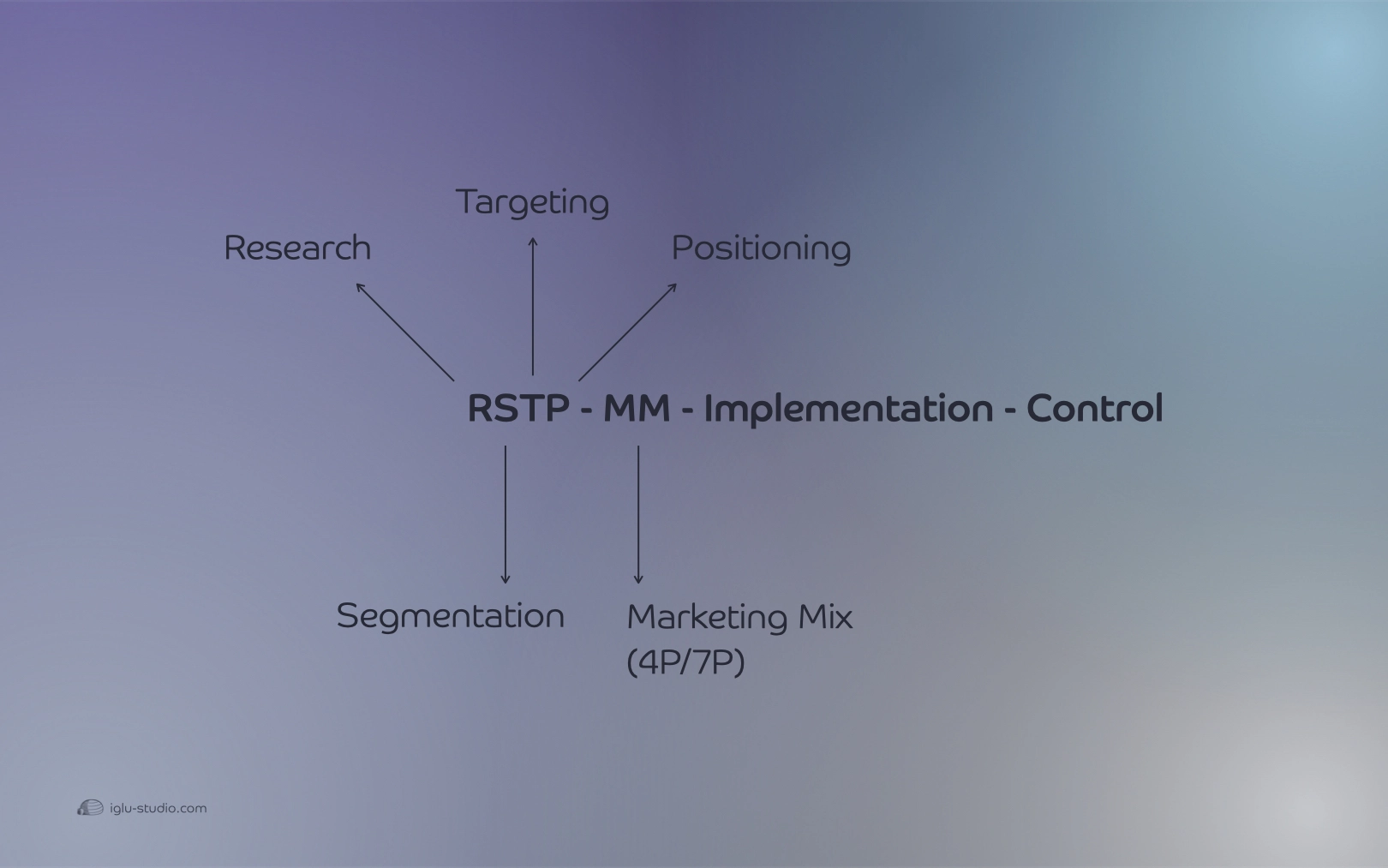Brand Positioning: Slicing the market cake & making the strategic winning move
The formation and growth of a brand is not akin to creating a work of art that relies solely on fleeting inspiration and creative impulses; rather, it demands intellectual discipline, rigorous data analysis, and execution in concert with a coherent strategy. Brand positioning is the point at which all marketing and identity‑building efforts converge into a single outcome: creating a distinctive, clear, and enduring image in the mind of the target audience.
Nevertheless, experience has shown that many brands fail not because of weaknesses in their products or services, but due to the absence of a structured approach to market understanding, audience segmentation, and defining their position. The RSTP–MM–Implementation–Control framework addresses this gap by providing a clear and consistent path—from the earliest research activities to final evaluation and refinement.

Step One: Market Research
Market research is the cornerstone of any brand strategy. This stage can be likened to field studies conducted before beginning an architectural project—the architecture that will, in due course, shape the image of the brand in customers’ minds.
When conducted thoroughly and comprehensively, such research reveals not only customers’ evident needs but also latent needs—requirements that are not directly articulated in customer statements but can be inferred from their behaviors, choices, and subtle dissatisfactions. At times, research also uncovers that a known need can still be fulfilled in a more refined, efficient way—an insight that can spark innovation and create competitive advantage.
Step Two: Segmentation
Once sufficient understanding of the market is achieved, it must be divided into homogeneous segments. For simplicity, imagine the statistical population from your research as a large cake. Based on criteria such as geography, demographics, lifestyle, or purchasing behavior, this cake is sliced into smaller portions. Each slice represents a distinct market segment sharing common characteristics. This division provides the clarity necessary to design targeted strategies.
Step Three: Targeting
Not all slices of the cake are equally valuable. This stage is about deciding which slice will represent the loyal and profitable market of the future. Selecting a target market should be based on three factors: alignment with available resources, compatibility with competitive advantage, and consistency with brand identity. Focusing on the wrong segment is much like choosing the wrong ingredients in cooking—it can jeopardize the final outcome.
Step Four: Positioning
Positioning can be compared to a precise chess game; the chessboard is the market, while the pieces represent your brand and your competitors. Success is not achieved merely by spotting an empty square; one must know where competitors are playing, what their strengths and weaknesses are, and how to choose a position—rooted in your resources and points of differentiation—that delivers maximum value and memorability in the audience’s mind. Tools such as perceptual maps help visualize and evaluate this position with greater clarity.
Step Five: Marketing Mix
Once the brand’s position is determined, all marketing elements must be shaped in alignment with it. Whether in the traditional 4P framework (Product, Price, Place, Promotion) or the extended 7P model (adding People, Process, and Physical Evidence), every decision should reflect and reinforce the chosen position. This coordination ensures brand message consistency and enhances the customer experience.
Step Six: Implementation
A strategy on paper holds no value unless executed with precision and discipline. This stage involves team coordination, defining operational plans, designing campaigns, and allocating resources. Successful implementation requires a common language among all stakeholders—from senior management to frontline customer‑facing staff.
Step Seven: Control and Improvement
Ongoing evaluation is an inseparable part of the journey. Indicators such as brand awareness, brand preference, market share, and customer satisfaction provide a realistic picture of the strategy’s effectiveness. Analyzing these data points enables timely revisions and course corrections.
The RSTP–MM–Implementation–Control model is not a one‑off prescription but a continuous cycle of understanding, decision‑making, execution, and learning. It enables brands not only to be seen in the marketplace but also to secure a strong and lasting place in the minds and hearts of their audiences. The deeper and more securely a brand is established in those minds and hearts, the greater the audience’s loyalty—ultimately leading them to become true evangelists for the brand.


